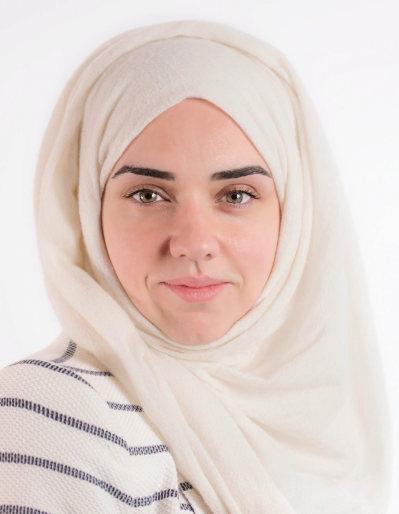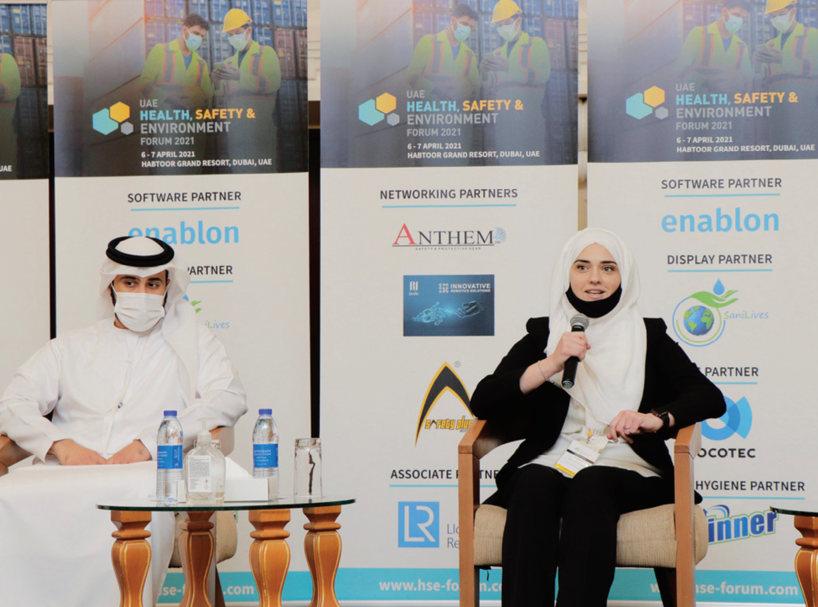
4 minute read
HSE UAE Forum
Advancing HSE
through collaboration
Dr Rahaf Ajaj, assistant professor in EHS, College of Health Sciences, Abu Dhabi University, shares her thoughts on the role of academia/industry collaboration in advancing HSE.
ABOVE: Dr Rahaf Ajaj, assistant professor in EHS, College of Health Sciences, Abu Dhabi University.
What role can collaboration between academia and industry play in driving solutions to HSE issues, and are there any examples you could highlight relating to the UAE or the wider region?
There is an apparent gap between academia and the industrial sector. Collaboration is needed to play a significant role in deriving relevant solutions through collaborative research projects, to qualify students with updated practical knowledge and prepare them to best fit the market's needs. To achieve a better standard of life quality and welfare, it is crucial to establish a strong linkage between theoretical knowledge (in academia) and practice (in the market), and train students to reflect on the learning outcomes of health and safety in real life. Collaborations between universities and industries have made significant progress over the past years. Some of the more obvious reasons include the advanced technological changes that have presented different hazards in the workplace, as well as the growing interest in ethics and corporate responsibility.
Universities need to see the results from their research put into practice. At the end of the day, it is mutually beneficial to collaborate, and there are excellent examples of successful collaboration between universities and industry partners. For example, the College of Health Sciences at Abu Dhabi University recently signed many MoUs with multiple medical and industrial sectors. The outcomes of these agreements are motivating and have opened new opportunities for students, faculties and industry partners.
What do you think are the main ingredients for effective and successful industry/academia collaboration?
One of the most crucial aspects of effective collaboration is identifying the purpose, goals, and objectives it is hoped to accomplish. A mindset focusing on the problem-solution trail is a crucial element in which creativity and innovation are critical ingredients for success. Clear and effective communication, based on transparency, is an effective tool. Long-term thinking, mutual trust, respect, objectivity and accountability are other
must-have ingredients for successful collaboration. I would like to add here that being open-minded is a crucial ingredient to any success.
What are the main gaps between academia and industry, and how can these be bridged?
In general, alumni struggle to get jobs, either because of their lack of experience or absence of functional training. Having a relevant internship as part of the curriculum is an operative solution for this problem. At the same time, employers need to collaborate in having the motivation to train new graduates and allow them to learn and gain practical experience. As for the university, it is responsible for supporting students in achieving their goals and enabling them to best fit the job market. The university should focus on up-to-date knowledge and skills that respond to what industry demands and build on the current curriculum to match them. Conducting class miniprojects and involving students with inside and outside class activities are all helpful elements. Students' empowerment with the latest practical skills, competencies, and capabilities is vital in solving employment gaps. Developing curriculums that consider the students' interests with the coordination of industry can play a significant role. Conducting impactful research projects in collaboration with industry, involving active student participation and solving real challenges in the industry, is critical for bridging existing gaps. We need to discuss topics and challenges of shared interest and collaborate to find a better way to merge academia and industry to achieve the best results and innovate feasible and sustainable solutions.
How can collaboration between scientists and engineers support HSE and advance new technologies?
Modern safety and health professionals are more challenging and more critical than they have ever been. To achieve feasible solutions, collaboration is needed between experts from multi-disciplines, including science and engineering. Scientists can work more on the development of the technology, while engineers can focus more on the application side. Both knowledge and expertise are needed to integrate feasible and applicable innovative solutions.
What do you think are the paramount health, safety, and environmental issues of concern currently in the UAE, which would benefit from further research and development?
I believe that the global Covid-19 pandemic is evidence of the substantial health and safety considerations which apply in the UAE. The country progressed meaningfully to manage HSE issues to ensure life continuity and adapt the best to the situation, following strict health precaution measures. Many research ideas can be explored through collaboration with industry to reduce hazards in the workplace and ensure occupational health and safety. In addition, there are various important issues related to oil and gas, carbon footprint, limited water resources, overfishing, waste generation, air pollution, land degradation, desertification and invasive species, which are posing an environmental threat to the UAE and many countries at the global level. I propose the idea of establishing a research-based HSE programme in the UAE, which can be a channel to link universities and industries. It can help to bridge the gap by identifying the concerns in HSE and finding solutions through good collaboration between researchers, engineers, technicians, technologists, and decision-makers. ❖
Dr Rahaf Ajaj participating in a panel session at the HSE UAE Forum.









